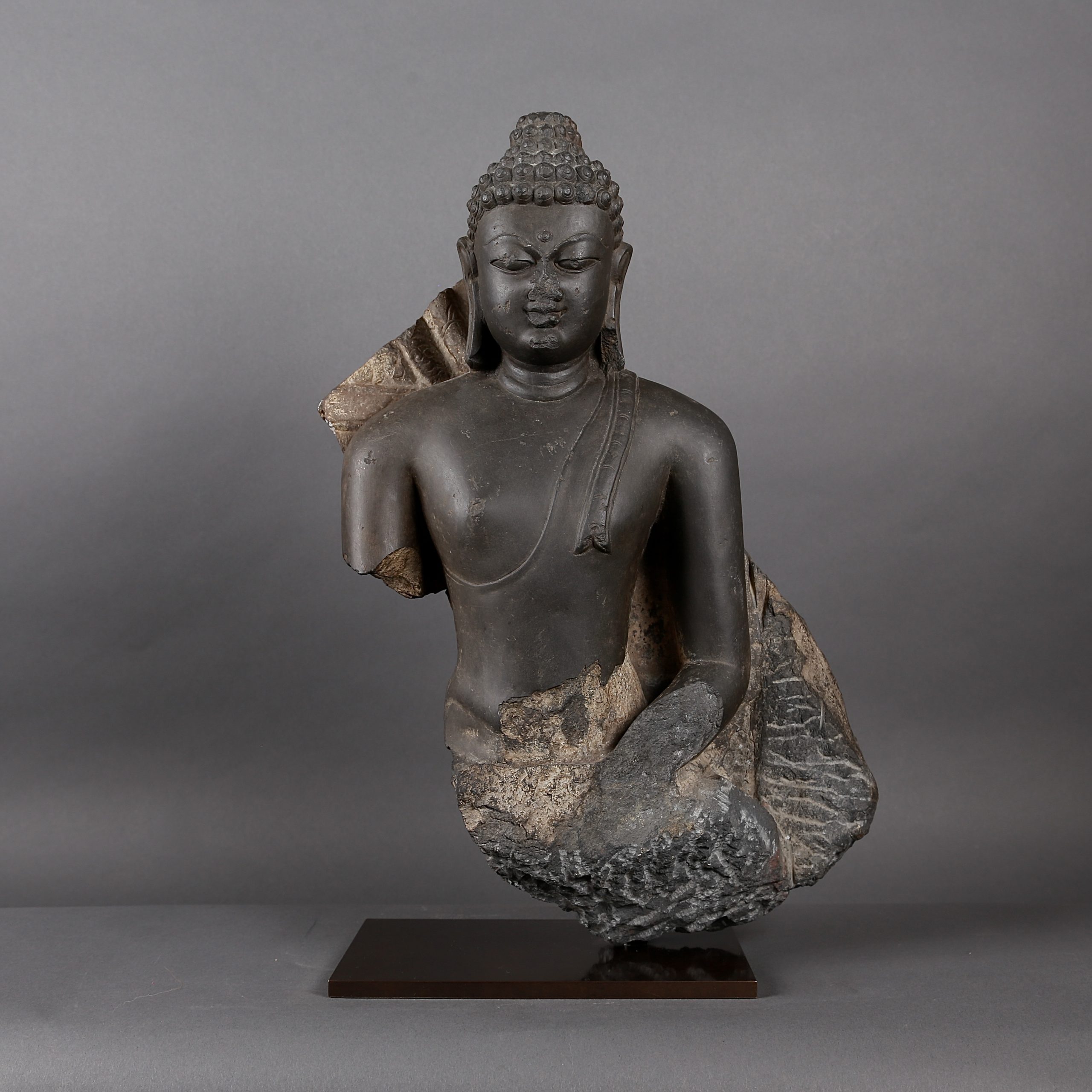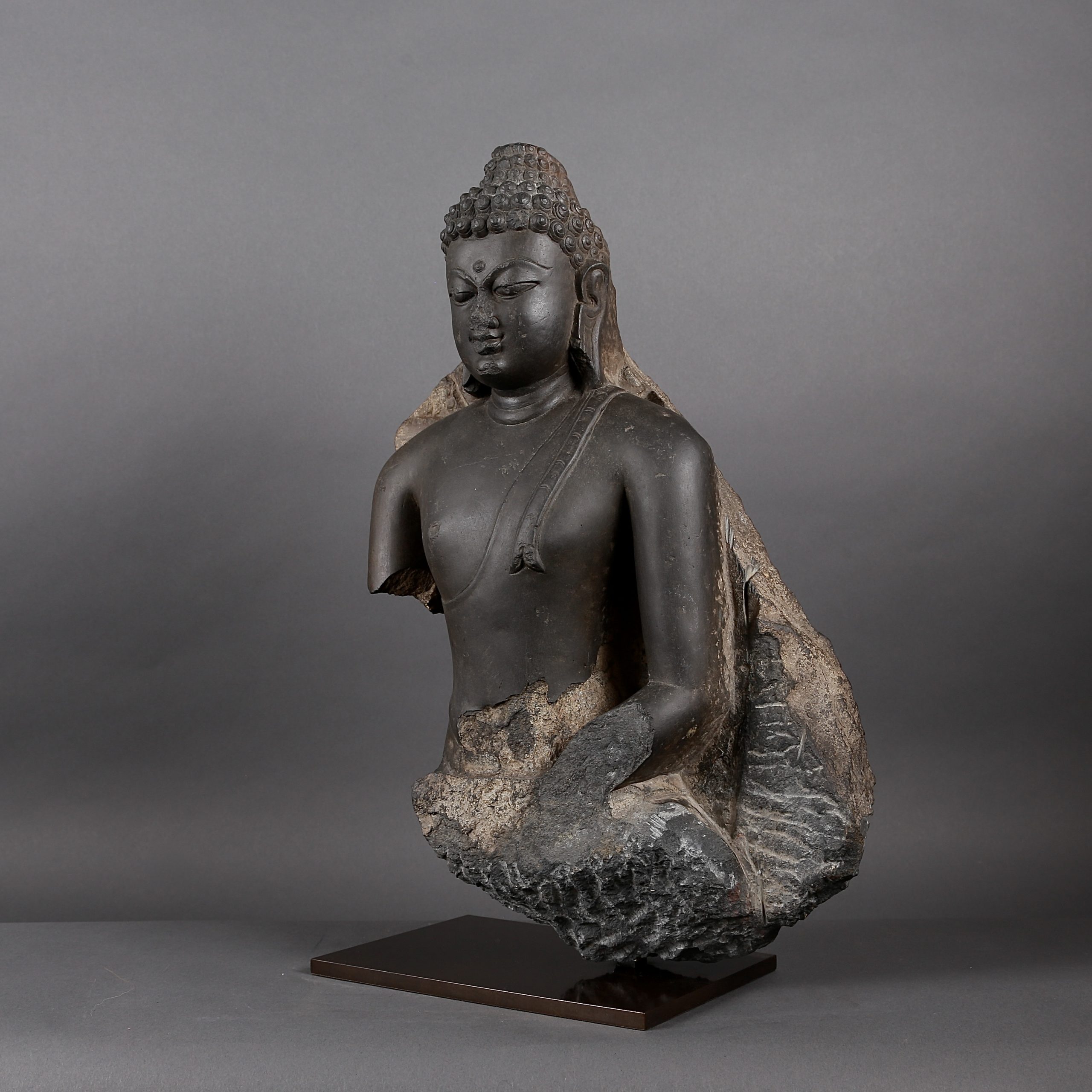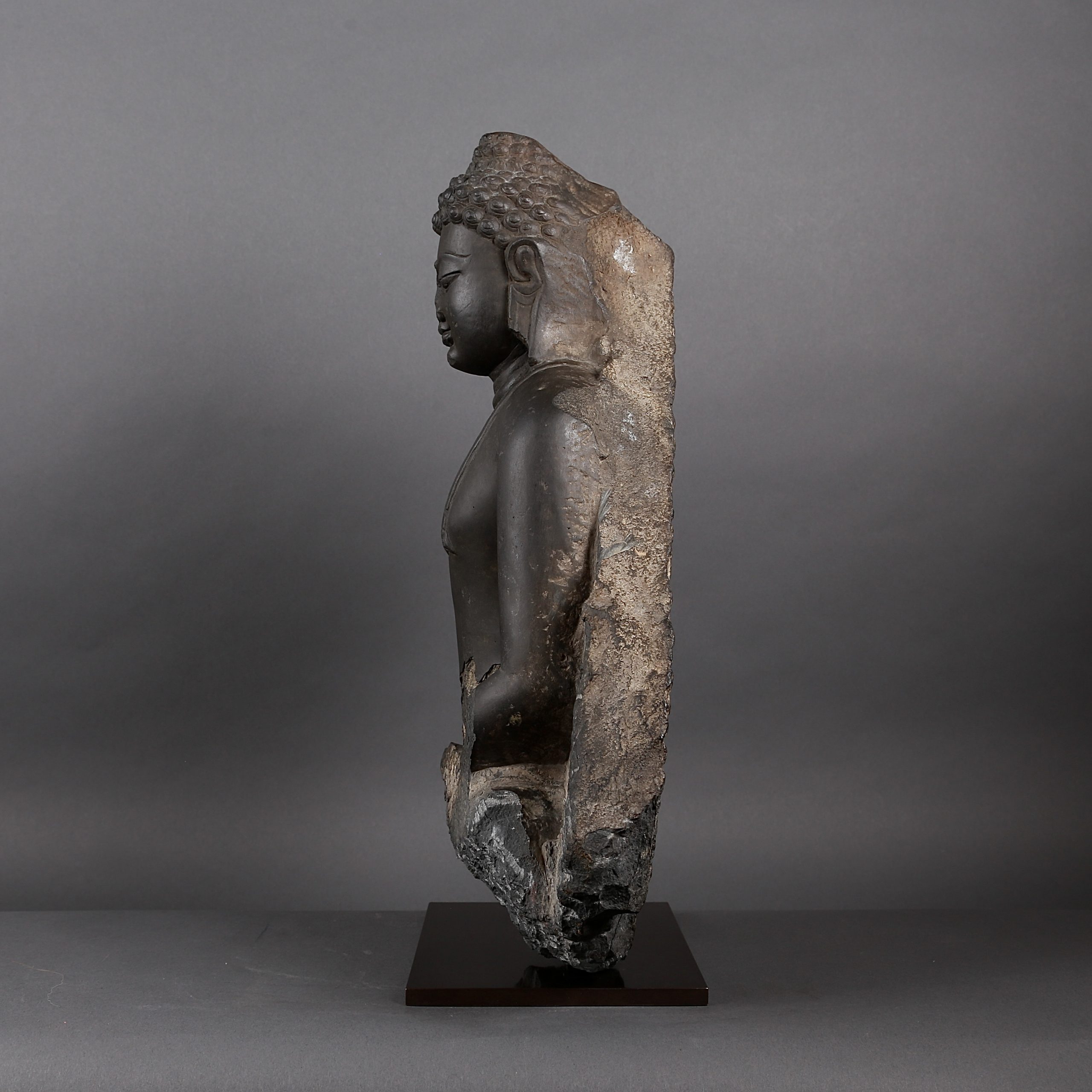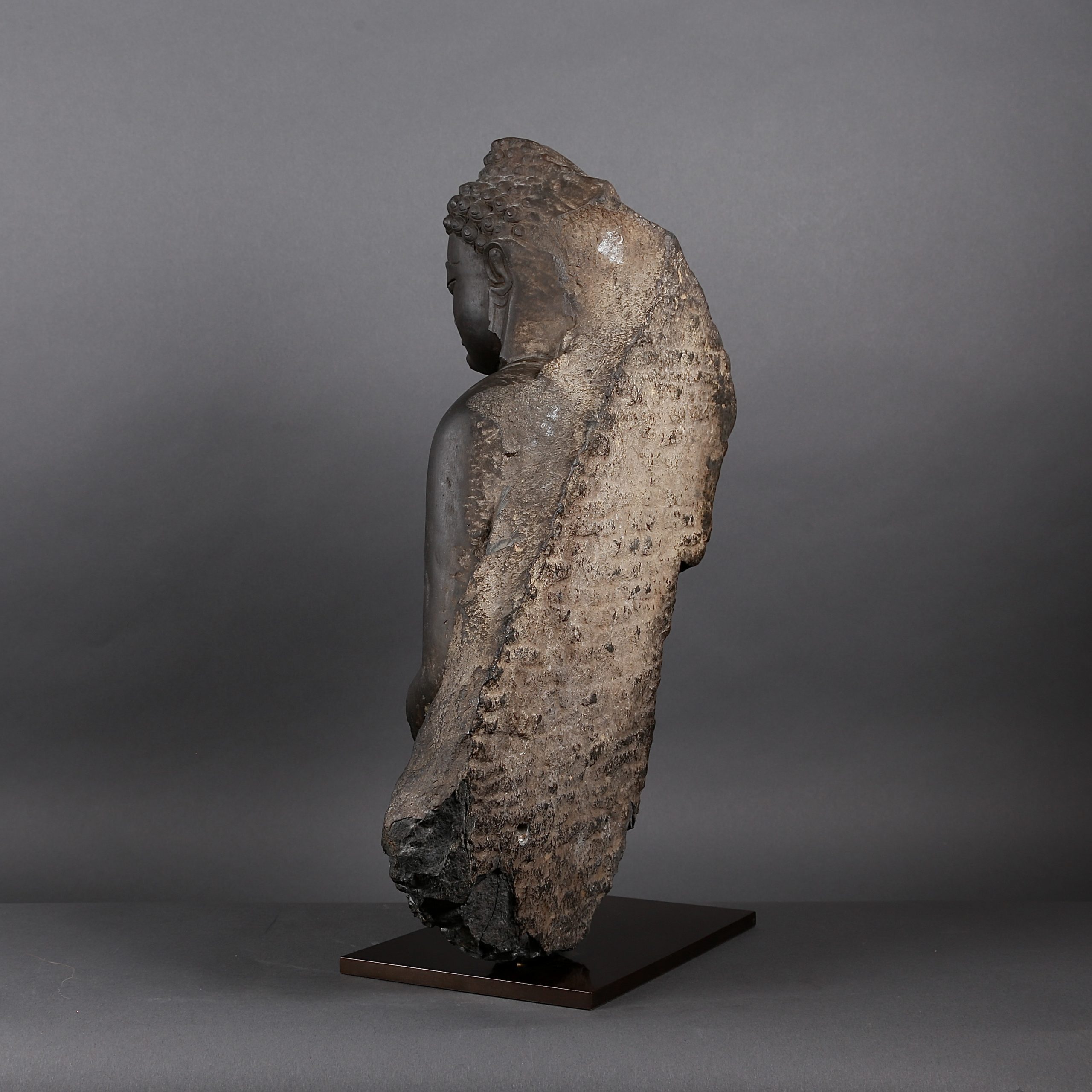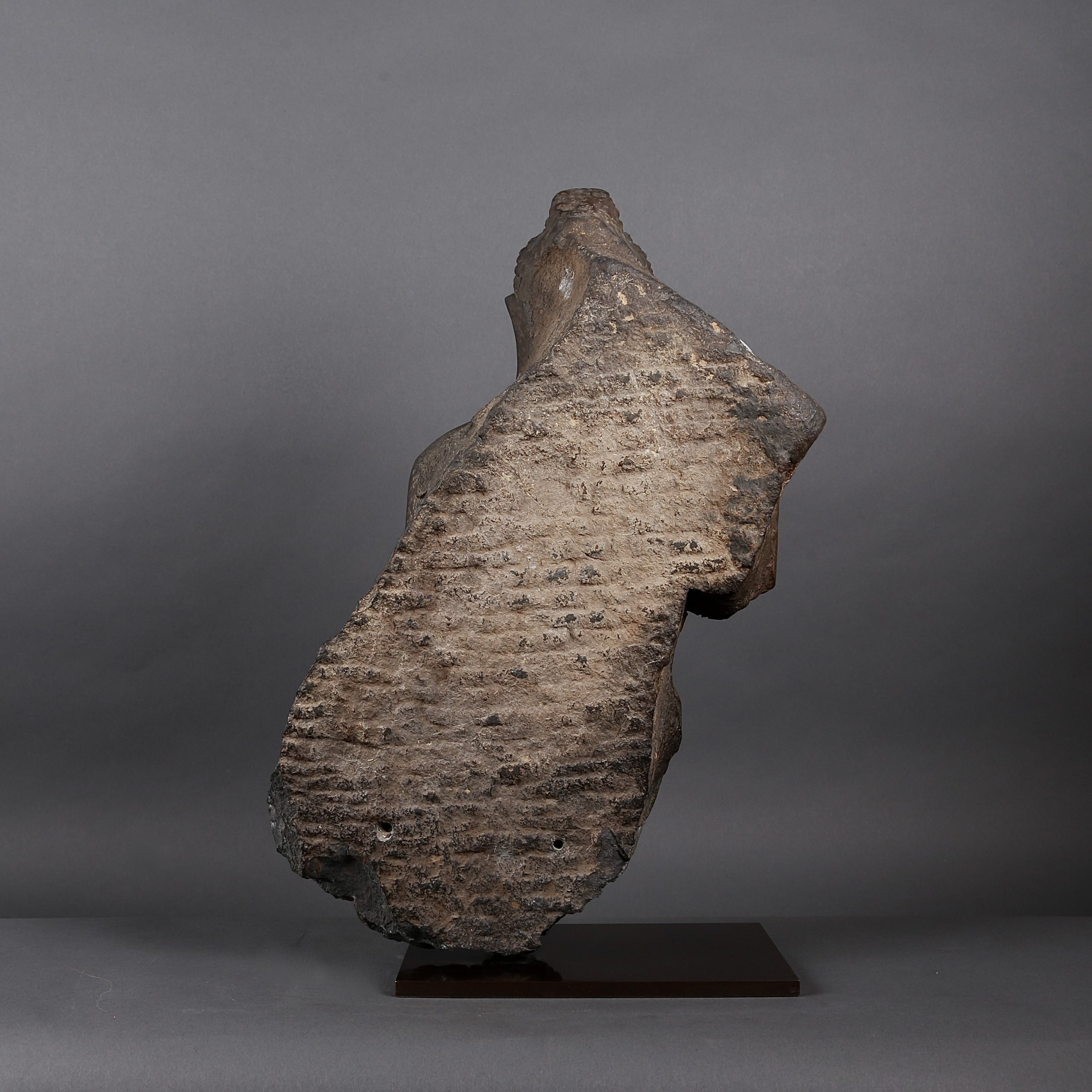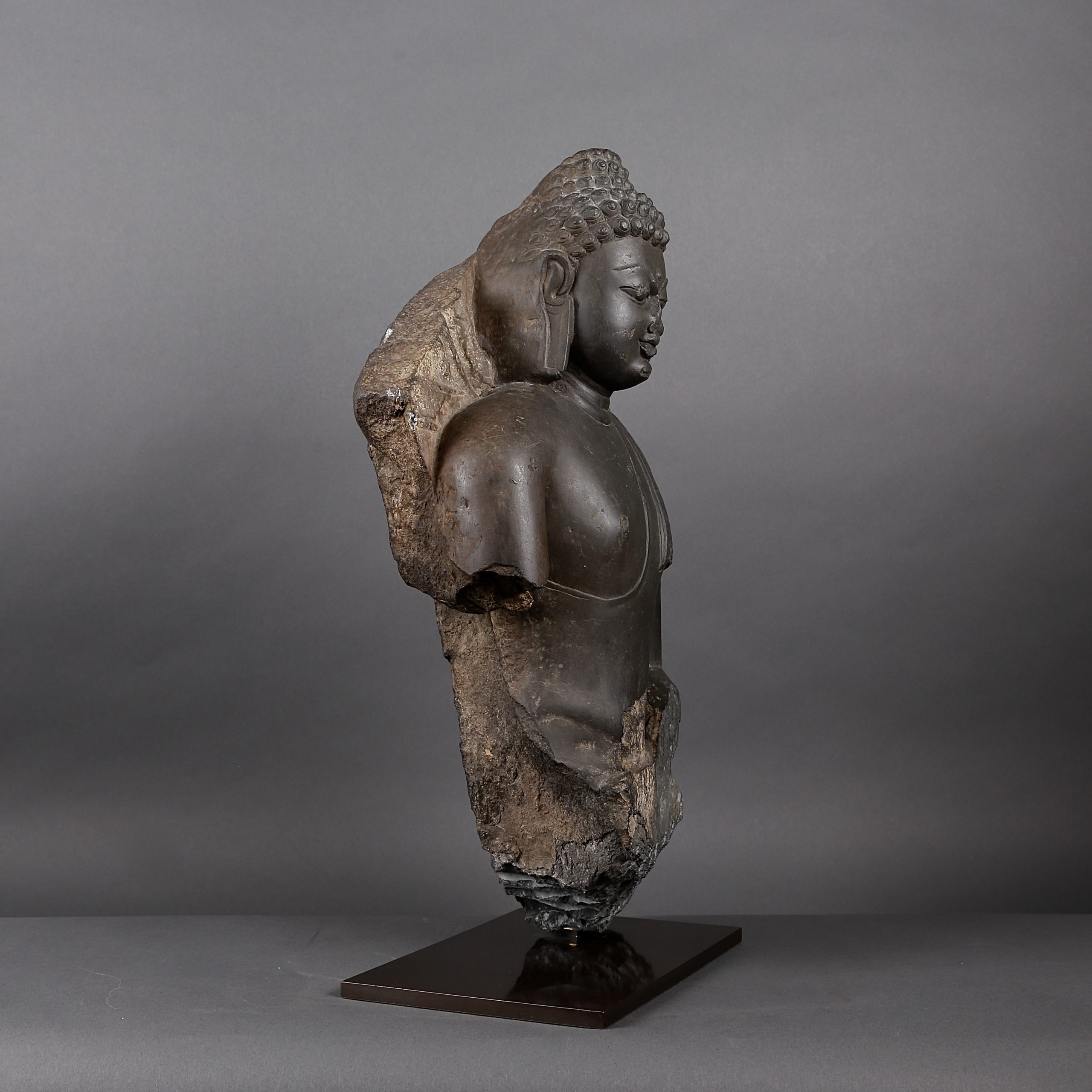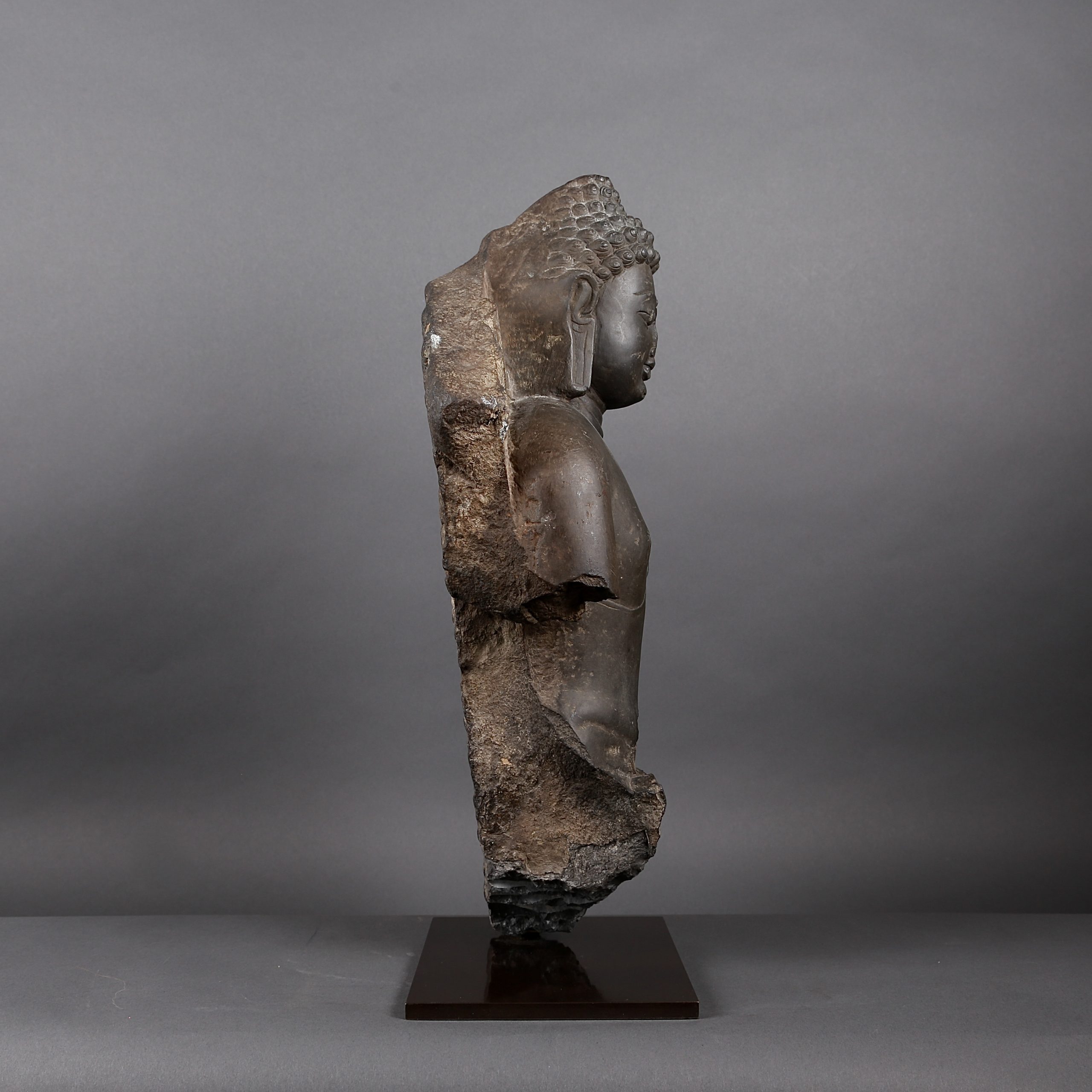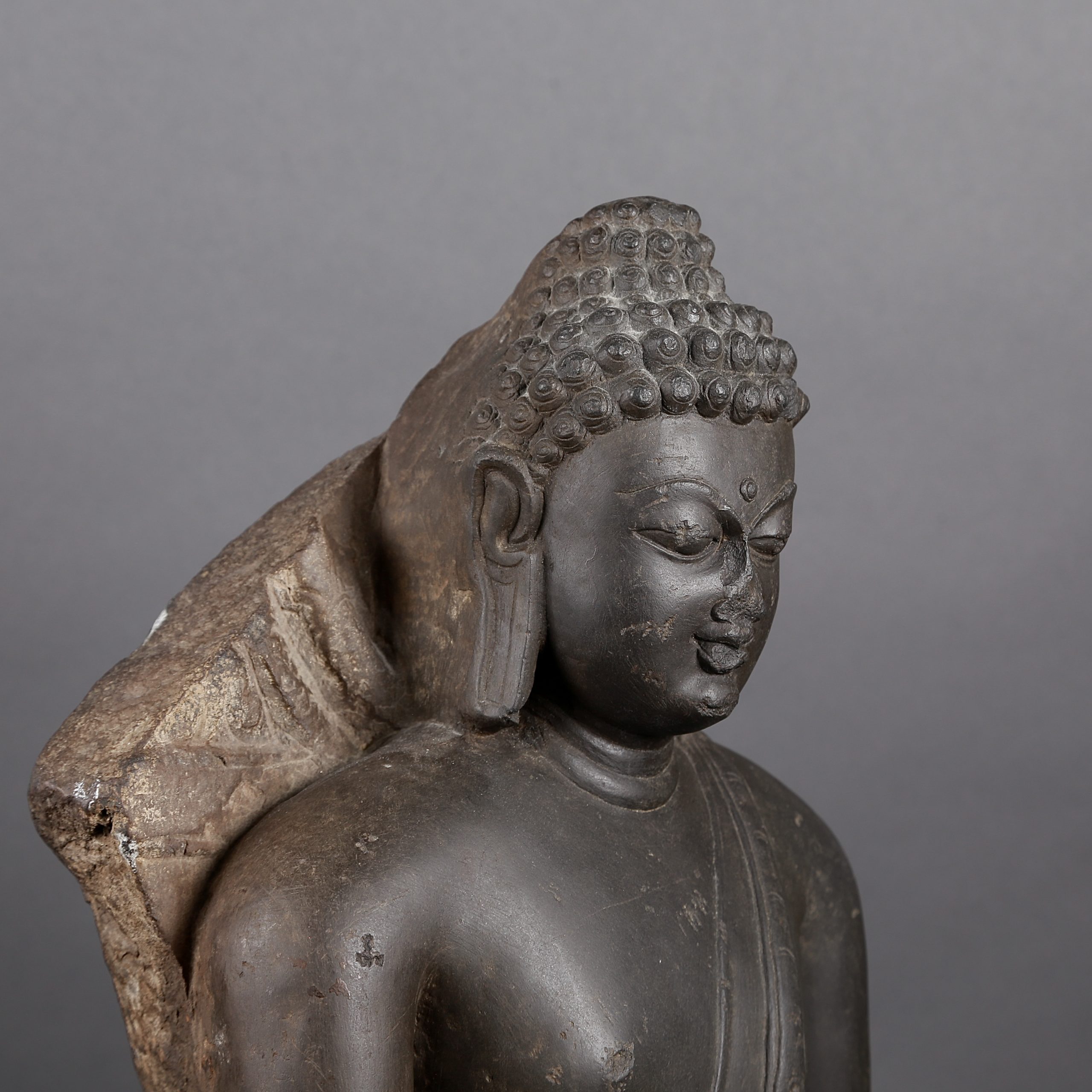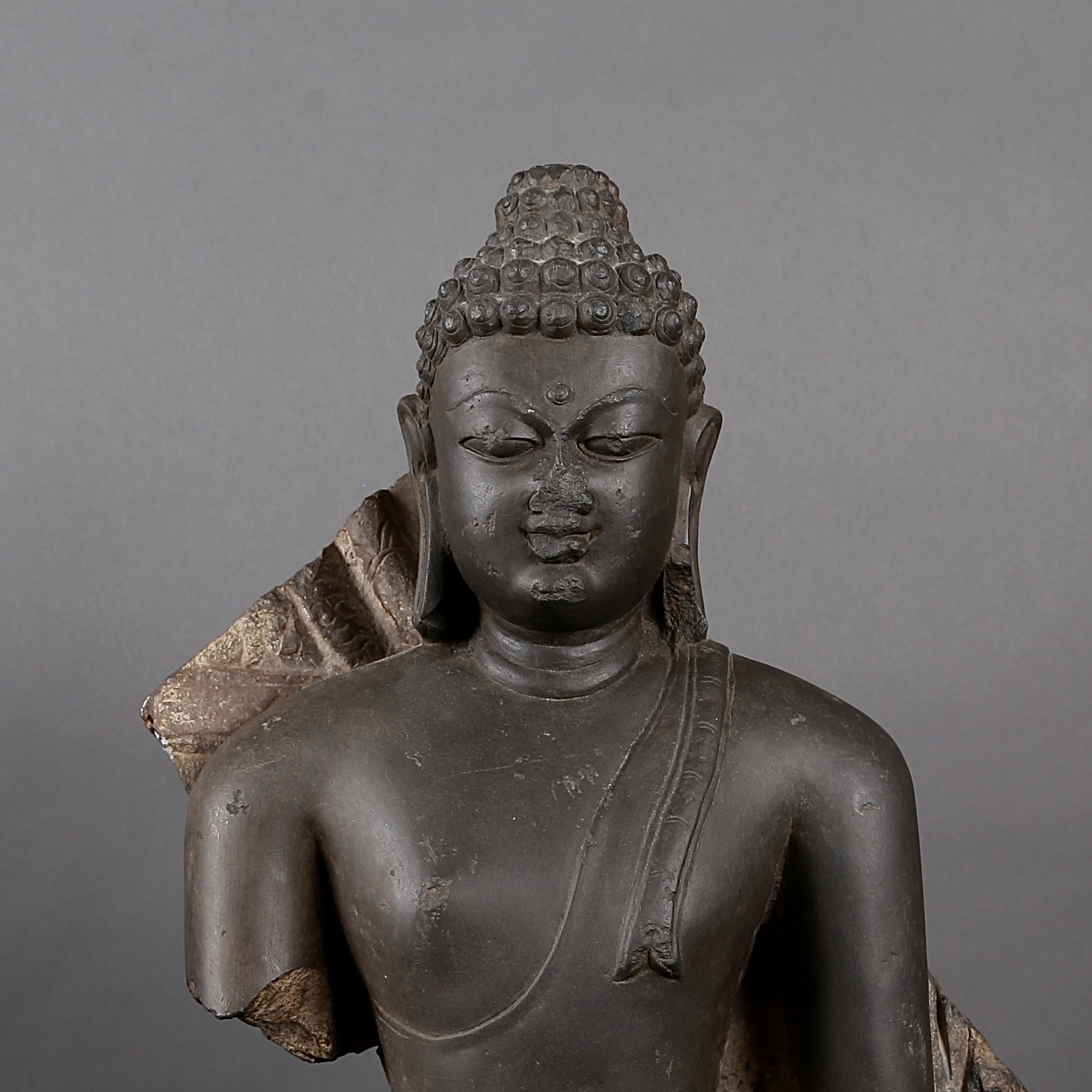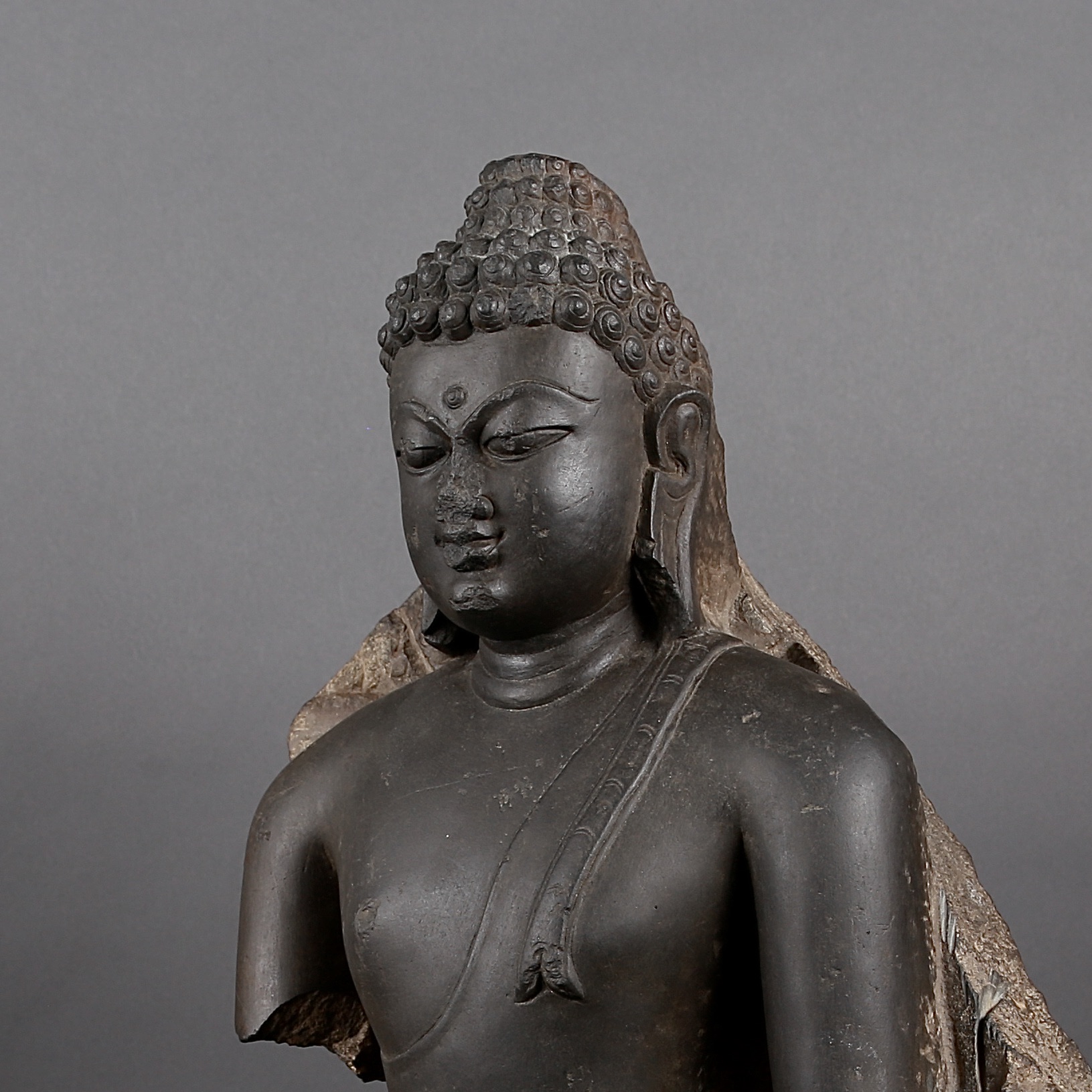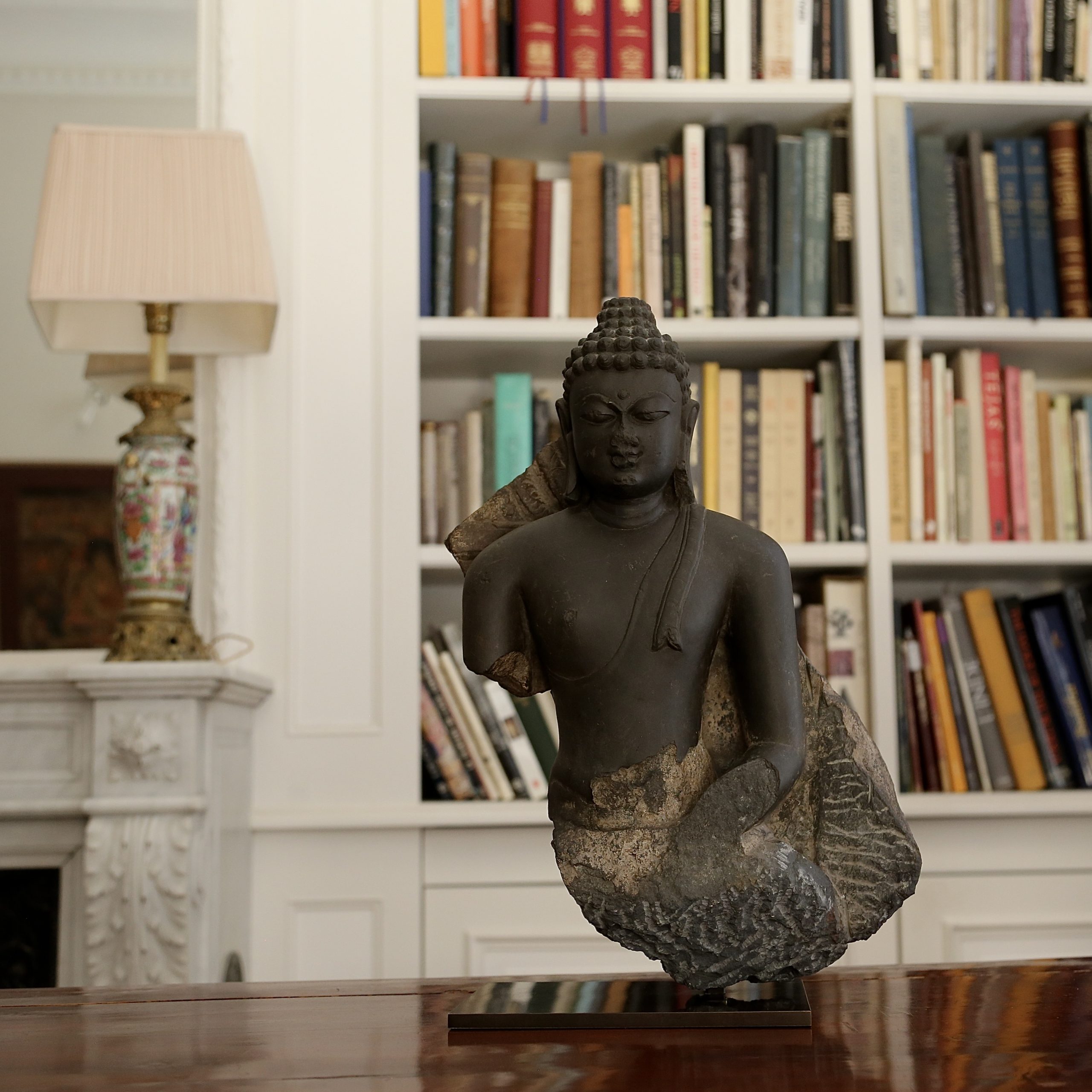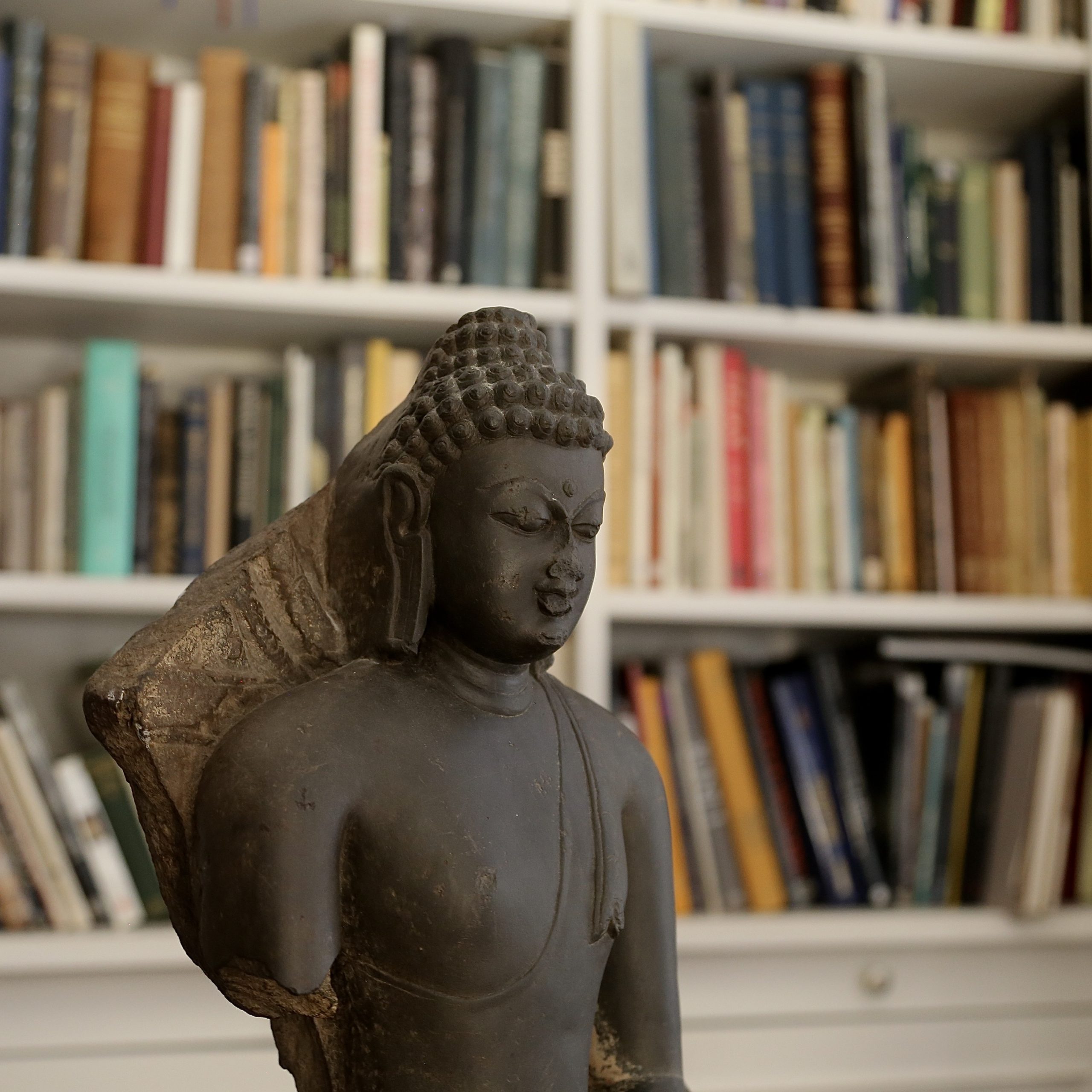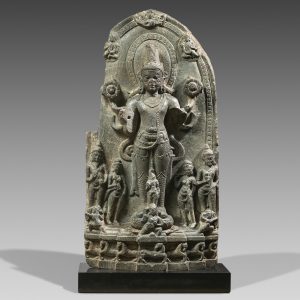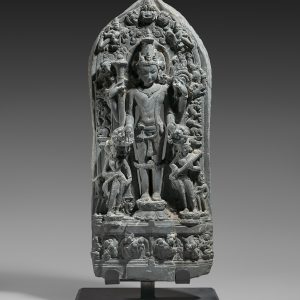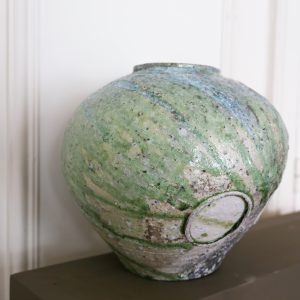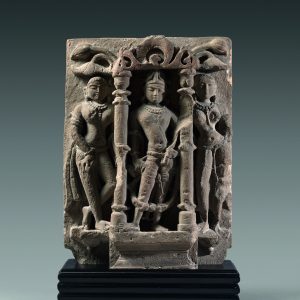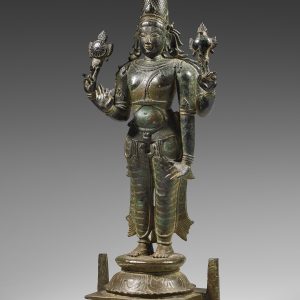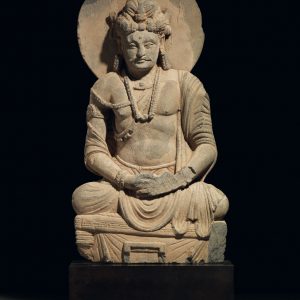Bust of Śākyamuni Buddha
Black stone
Northeast India (Bihār, Bengal)
Circa 10th century, Pāla dynasty (8th-12th century)
H. 43 cm or 16 ⅞ in
Description
A clear iconography
This very beautiful representation of the Blessed One is of a very significant size. One must imagine that originally the Buddha, of heroic size, occupied the major part of a stele with a non-openworked background that magnified him. He was probably figured sitting in vajarapryaṅkāsana on a lotus, both legs bent with the soles of the feet visible: the seated position can indeed be concluded from the stone block that has reached us fragmentary. By comparison with stelae preserved in the greatest museums, his right hand either sketched the fear-allaying gesture (abhaya mudrā) or made the earth witness gesture (bhūmisparśa mudrā), while his left hand rested in his lap.
A codified representation
Buddha is perfectly recognizable here: wearing the monk’s robe (saṃghāṭī), also called the “outer cloth” (uttarāsanga), this garment covers his left shoulder only. Of the distinctive signs (lakṣaṇa) of a “great man” (mahāpuruṣa), tradition kept only two essential items in its images, both of which are evident here: the fleshy protuberance on the crown of the head (uṣṇīṣa) covered with well-defined curls, and the whorl of hair on the lower forehead (ūrṇā). The earlobes distended by the wearing of heavy gold jewelry demonstrate the renouncing of the vanities of his former worldly life.
A purified style, characteristic of an early datation
Absolutely characteristic of Pāla stelae, the face was surrounded by a nimbus fringed with stylized flames that is still visible above his right shoulder and suggesting the light radiating from the Buddha. One must admire his face, both powerful and charismatic, with fine features and a particularly sensitive modelling. Typical of this art, extreme attention is paid to the contour lines. The chin and mouth are slightly prominent and the arched eyebrows meet in a V shape. Stylistically speaking, the stele appears to predate the strong stylization that characterizes Pāla art as of the 11th century. The elongated face, with its full lips and somewhat protruding eyes, refers to post-Gupta art of the 7th-8th century, and beyond that to classic Indian art of the 5th-6th century.
Provenance: Private collection, Germany, acquired in the 1960s.

